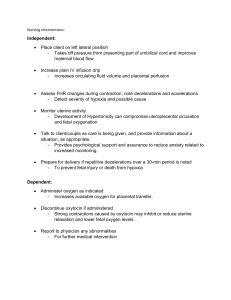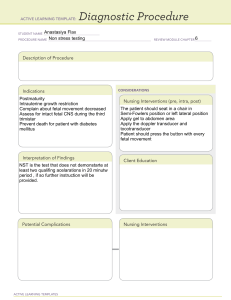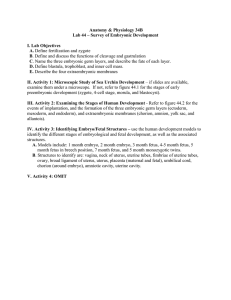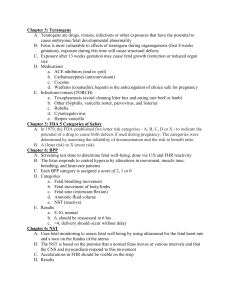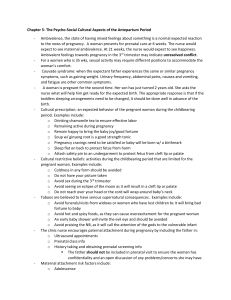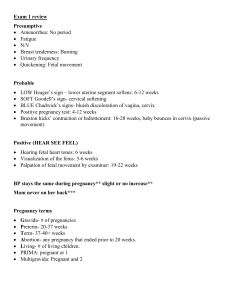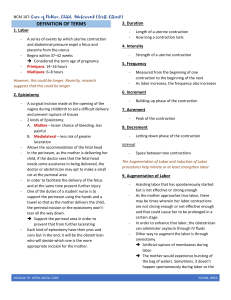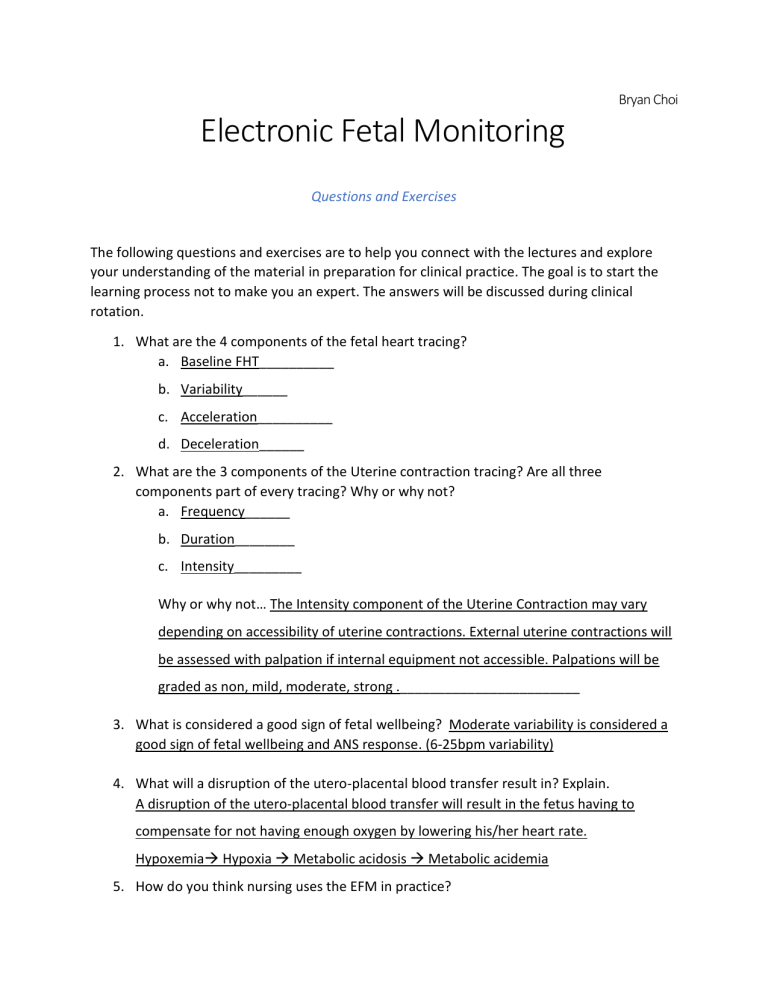
Bryan Choi Electronic Fetal Monitoring Questions and Exercises The following questions and exercises are to help you connect with the lectures and explore your understanding of the material in preparation for clinical practice. The goal is to start the learning process not to make you an expert. The answers will be discussed during clinical rotation. 1. What are the 4 components of the fetal heart tracing? a. Baseline FHT__________ b. Variability______ c. Acceleration__________ d. Deceleration______ 2. What are the 3 components of the Uterine contraction tracing? Are all three components part of every tracing? Why or why not? a. Frequency______ b. Duration________ c. Intensity_________ Why or why not… The Intensity component of the Uterine Contraction may vary depending on accessibility of uterine contractions. External uterine contractions will be assessed with palpation if internal equipment not accessible. Palpations will be graded as non, mild, moderate, strong .________________________ 3. What is considered a good sign of fetal wellbeing? Moderate variability is considered a good sign of fetal wellbeing and ANS response. (6-25bpm variability) 4. What will a disruption of the utero-placental blood transfer result in? Explain. A disruption of the utero-placental blood transfer will result in the fetus having to compensate for not having enough oxygen by lowering his/her heart rate. Hypoxemia Hypoxia Metabolic acidosis Metabolic acidemia 5. How do you think nursing uses the EFM in practice? Nurses may use EFM in practice to monitor the fetus’ health as it is developing inside the uterus. 6. What is the fetal baseline heartrate? (use the picture A above) 120 7. What is the variability? (use the picture A above) Moderate Variability ------------------------------------------------------------------------------------------------------------------------------- A. B. C. 8. Which deceleration bellow is likely caused by a hemorrhage situation (i.e. placental abruption) B 9. Which is most likely cause by compression of the umbilical cord? A 10. Which is likely caused by compression of the fetal head via decent into the pelvis and constriction caused by a contraction? 11. C

